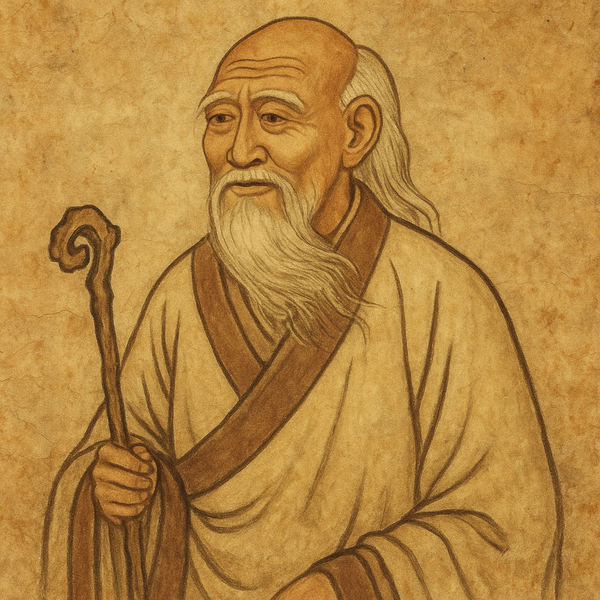Laozi: The Sage of Daoism
Introduction
Laozi (also spelled Lao-Tzu, Lao-Tze, or Lao-Tsu) stands as one of the seminal figures in Chinese philosophy and spiritual tradition. He is most renowned as the founder of Daoism (Taoism), a philosophy and religion that has profoundly influenced not only China but also cultures worldwide. The mysterious and legendary aspects surrounding Laozi’s life, coupled with the enduring wisdom encapsulated in his principal work, the Dao De Jing (Tao Te Ching), make his story and teachings an enduring subject of fascination and study.
Laozi: Life and Legend
Historical and Legendary Accounts
Despite his enormous influence, remarkably little is known with certainty about Laozi’s life. Traditional accounts, such as those found in the Records of the Grand Historian (Shiji) by Sima Qian, present a blend of history and myth.
| Aspect | Details |
|---|---|
| Name | Laozi (meaning “Old Master”); real name allegedly Li Er or Li Dan |
| Time Period | Traditionally 6th century BCE (Zhou Dynasty), though some suggest 4th century BCE |
| Occupation | Archivist and scholar at the royal Zhou court |
| Famous Encounter | Said to have met Confucius, engaged in philosophical debates |
| Departure | Grew weary of court life; rode westward on a water buffalo, never to return |
| Legacy | Authored the Dao De Jing at border request before vanishing into the west |
Mythical Elements
Legends ascribe to Laozi an almost supernatural birth, claiming he was born after his mother carried him in her womb for 72 years, and that he was born with white hair, hence the name “Old Master.” The story of him meeting Confucius signals the iconic intersection of major Chinese philosophical traditions.
The Dao De Jing: Cornerstone of Daoist Thought
Composition and Structure
The Dao De Jing (Tao Te Ching) is a concise, poetic treatise on the nature of the Dao (the Way) and De (Virtue). Comprised of approximately 5,000 characters divided into 81 chapters, its style is enigmatic, allowing for a myriad of interpretations.
| Dao De Jing Structure | Content Focus |
|---|---|
| Chapters 1–37 (Dao) | The nature of the Dao (the Way) |
| Chapters 38–81 (De) | The power of De (virtue) in life |
Core Concepts
The Dao (The Way)
The Dao refers to the fundamental, ineffable principle underlying the universe. It is spontaneous, nameless, formless, and the origin of all things. Describing the Dao, Laozi famously writes:
“The Dao that can be told is not the eternal Dao; the name that can be named is not the eternal name.”
Wu Wei (Non-action)
A cornerstone of Laozi’s teachings is wu wei, or “non-action.” This concept does not mean inaction, but rather effortless action aligned with the natural order. It encourages yielding, humility, and living in harmony with the flow of life.
Simplicity and Humility
The Daoist sage values simplicity, humility, and contentment, perceiving these qualities as sources of strength and tranquility.
Paradoxes and Opposites
Laozi frequently employs paradoxes to illustrate the complexities of reality:
| Paradox Example (Dao De Jing) | Meaning |
|---|---|
| “Weakness overcomes strength” | Flexibility and softness are ultimately more enduring than rigidity |
| “To yield is to be preserved whole” | Letting go and adapting ensure survival and harmony |
Laozi, Daoism, and Chinese Thought
Philosophical Daoism (Daojia) vs Religious Daoism (Daojiao)
While Laozi’s work forms the intellectual bedrock of Daoism, over centuries, Daoism expanded to include religious aspects—rituals, alchemy, and a pantheon of deities.
| Type | Focus |
|---|---|
| Philosophical | Harmony with the Dao, personal cultivation, ethics |
| Religious | Immortality, rituals, cosmology, deities |
Comparison to Other Philosophies
| Aspect | Laozi (Daoism) | Confucius (Confucianism) | Buddha (Buddhism) |
|---|---|---|---|
| Ultimate Goal | Harmony with the Dao | Social order, moral virtue | Liberation from Dukkha |
| Key Practice | Wu wei (non-action) | Ritual, filial piety | Meditation, detachment |
| Nature | Spontaneous, natural order | Hierarchical relationships | Emptiness, non-self |
Influence and Legacy
China and Beyond
Laozi’s Dao De Jing remains one of the most translated works in world literature. His philosophy continues to shape Chinese art, politics, medicine, and spirituality. Key elements—such as environmental harmony and balance—have found contemporary relevance globally.
Influence on Leaders and Thinkers
Throughout history, rulers, generals, poets, and common people have drawn inspiration from Laozi’s teachings, advocating for policies of minimal intervention, non-coercion, and alignment with nature.
Modern Interpretations
Daoism, informed by Laozi’s vision, has contributed to discussions on sustainability, mindfulness, and alternative lifestyles. In fields such as psychology and management, ideas akin to wu wei are increasingly appreciated.
Selected Quotes from the Dao De Jing
| Chapter | Original (Chinese) | English Translation |
|---|---|---|
| 1 | 道可道,非常道;名可名,非常名。 | “The Dao that can be spoken is not the eternal Dao; the name that can be named is not the eternal name.” |
| 8 | 上善若水。 | “The highest good is like water.” |
| 22 | 曲则全,枉则直。 | “Yield and remain whole; bend and become straight.” |
Conclusion
Laozi’s legacy endures as both a spiritual and philosophical touchstone. His Daoist wisdom offers not an easy doctrine, but rather a profound invitation to contemplate the Nature of existence and our place within it. Though he may be shrouded in legend, Laozi’s quiet voice continues to echo across the ages, urging humanity to embrace humility, simplicity, and harmony with the world.
Further Reading
- Dao De Jing (Tao Te Ching) – Multiple translations available
- Sima Qian, Records of the Grand Historian
- The Taoism Reader, edited by Thomas Cleary
Tables and facts in this article serve for illustration and reference. For academic study, consult primary sources and scholarly works on Daoism and ancient Chinese philosophy.
